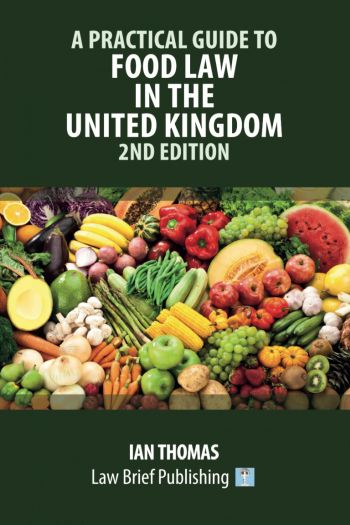
A lot has happened since the first edition of ‘A Practical Guide to the Law Relating to Food’ was published in 2018. The United Kingdom has ceased to be a member of the European Union. This was mentioned in the concluding chapter of the first edition where I said: “Brexit creates uncertainty; businesses, and to some extent, consumers want to avoid uncertainty”. We now have certainty in some respects. The UK has now left the EU and the regulatory and trading landscape between the two jurisdictions has changed in many ways. However, there remains much that is uncertain; the position of Northern Ireland being a prime example.
Some of the present uncertainty has arisen from the impact of the Covid-19 pandemic and this has created a double whammy of problems for businesses, regulators, advisers and particularly consumers. This updated edition highlights, and provide reference point for, some of the major changes to food law in Great Britain (England, Wales and Scotland) arising from the UK being outside the EU. GB legislation required significant updating to take account of GB institutions such as the Food Standards Agency and Food Standards Scotland being responsible for matters relating to regulation and authorisations. Although Northern Ireland remains in the UK, it is currently subject to EU food law and therefore the substantive legal changes in that jurisdiction have been minimal.
The early chapters of the book describe the legal and regulatory changes that have occurred in GB since 31 December 2020, particularly in respect of revisions to retained EU law and domestic food legislation and the authorisation process. Subsequent chapters focus on safety, hygiene, food information and nutrition and health claims and notes the changes made to domestic legislation. There follows a discussion about traceability, withdrawal and recalls, official controls and enforcement, prosecutions and sentencing.
It is important to note that despite the major changes necessitated by the UK leaving the EU, much of the day-to-day activity has stayed the same. Food businesses are still obliged to produce safe food that is as described, competent authorities continue to inspect and enforce and the courts make decisions that affect businesses, authorities and consumers. The book does not lose sight of this and provides practical examples of a food poisoning incident, breaches of hygiene legislation, food information and claims as well as withdrawals and recalls, prosecutions and sentencing.
As this is a practical guide to food law, it has not been possible to make any more than a passing reference to changes relating to customs and trade procedures.
This book may be useful for anyone with a professional interest in food law and regulation whether as students, academics, business operators, workers in the food industry or legal and regulatory professionals. It may also be of interest to anyone who wants a general introduction to the way in which UK food law has developed and continues to develop since 1 January 2021.